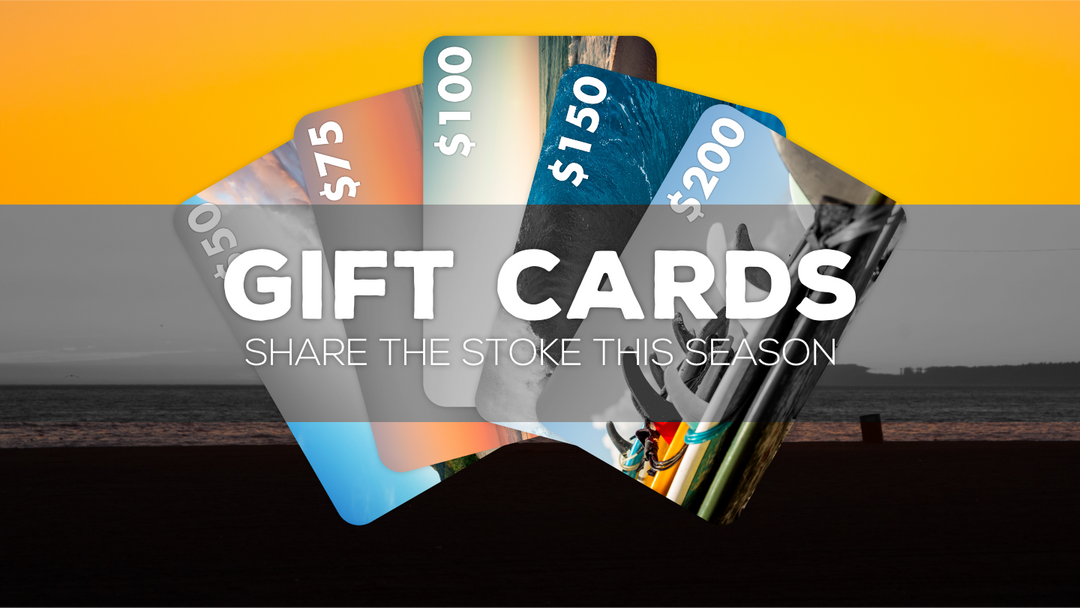Legends: DALE VELZY
Surfboards by Velzy (1949)
On the family tree of surfboard shapers, one would put Dale Velzy right at the top--with the likes of legendary designer/shapers Bob Simmons, Joe Quigg and Matt Kivlin. While Simmons and Quigg in particular have been credited with many design innovations, Quigg himself once said, "You couldn't even sell a board in the sixties unless it looked like a Velzy." And as a mentor, no one was more influential than Dale Velzy; so many of the best-known shapers from the late '50s and into the '70s learned the art of shaping from him.
Born on September 23, 1927 and raised in Hermosa Beach, California, Velzy started surfing in 1936 and shaped his first board when he was just 10 years old. The grandson of a cabinetmaker, Dale was soon shaping redwood/balsa boards for his friends under the Hermosa Beach pier. In 1949, he opened Velzy Surfboards in nearby Manhattan Beach, a shop often considered the first surf shop in the world. In 1953, Velzy and Hap Jacobs formed Velzy-Jacobs Surfboards, opening a small shop first in Hermosa Beach and then in Venice Beach, California. By the late '50s, the two had shops in San Clemente, Hermosa Beach, Newport Beach, San Diego and Honolulu, and their two factories were cranking out 150-200 surfboards a week. A comparatively reserved Hap Jacobs was said to be the partnership's businessman, while the colorful and outspoken Velzy was the salesman. Jacobs said, "Velzy has always been fast and he's got loads of style," and "Boy, he loved to sell. Once he even sold my own personal board."
Busy with his successful manufacturing and retail ventures, Dale also had a hand in helping to develop another emerging segment of the surf industry--films. In 1957, he befriended a 20-year old surfer/aspiring filmmaker named Bruce Brown. Not only did Velzy outfit him with new 16-millimeter camera equipment, but sponsored Brown while he made Slippery When Wet, his first full-length surf film. While in Hawaii filming the movie in 1958, it was Brown--surfing with a few other Californians--who discovered and named the now-famous North Shore surf spot "Velzyland." We all know Bruce Brown went on to make Endless Summer, which was named one of the top 10 films of 1966 by Newsweek magazine.
While the mid to late '50s were heyday years for Velzy, things changed abruptly in 1959. First, he bought out Jacobs, ending their six-year partnership. Later that year, with Velzy still reigning as the king of surf retail, his business became a target for the IRS. Notices were taped to his shop doors, stating they had been closed for non-payment of taxes. Velzy was said to have replied to the notices by saying simply, "What taxes?"
An innovator in so many ways, Velzy's greatest contribution to the sport of surfing may have come as a board designer. Donald Takayama once claimed that "without Velzy, there wouldn't be a modern day longboard." He was probably talking about Velzy's "pig" design, which he introduced in 1955. With a wider tail area, pig boards turned easier and handled critical wave sections better than earlier parallel-railed shapes. "Simmons made them light. I made them turn," was the way Velzy put it. Other well-known Velzy designs included the Bump Board (1956), the Wedge (1962), and the Banjo (1963).
With so much that could be written about Dale Velzy, Joe Quigg probably summarized it best when he said, "He was the first guy to sponsor surfers, the first guy to advertise in a big way, and the first guy to put surfboards--and thus surfing--within the reach of the average kid on the beach." Velzy was a true pioneer in surfboard design, manufacturing, retailing and marketing, and he must have still had time to surf; as Greg Noll said, "A lot of people have forgotten what an incredible surfer he was. Dale was right there at the top."
As one of those average kids on the beach in the mid-sixties, I owe a lot to the legendary Dale Velzy. I had a chance to meet him in December of 2004, and he was every bit as colorful as you might imagine. He was as funny as he was full of surfing history. And where was Dale when Don Craig and I walked into his back yard? Standing at a band saw, cutting a redwood plank, which would become another one-of-a-kind, collectible surfboard. Sadly, Dale died on May 26, 2005, in a Mission Viejo, California hospital. Our thoughts and prayers are with his wife Fran, and we who have enjoyed the surfing lifestyle grieve his loss. Thank you, Dale, for all you gave to our sport...we will miss you.
Born on September 23, 1927 and raised in Hermosa Beach, California, Velzy started surfing in 1936 and shaped his first board when he was just 10 years old. The grandson of a cabinetmaker, Dale was soon shaping redwood/balsa boards for his friends under the Hermosa Beach pier. In 1949, he opened Velzy Surfboards in nearby Manhattan Beach, a shop often considered the first surf shop in the world. In 1953, Velzy and Hap Jacobs formed Velzy-Jacobs Surfboards, opening a small shop first in Hermosa Beach and then in Venice Beach, California. By the late '50s, the two had shops in San Clemente, Hermosa Beach, Newport Beach, San Diego and Honolulu, and their two factories were cranking out 150-200 surfboards a week. A comparatively reserved Hap Jacobs was said to be the partnership's businessman, while the colorful and outspoken Velzy was the salesman. Jacobs said, "Velzy has always been fast and he's got loads of style," and "Boy, he loved to sell. Once he even sold my own personal board."
Busy with his successful manufacturing and retail ventures, Dale also had a hand in helping to develop another emerging segment of the surf industry--films. In 1957, he befriended a 20-year old surfer/aspiring filmmaker named Bruce Brown. Not only did Velzy outfit him with new 16-millimeter camera equipment, but sponsored Brown while he made Slippery When Wet, his first full-length surf film. While in Hawaii filming the movie in 1958, it was Brown--surfing with a few other Californians--who discovered and named the now-famous North Shore surf spot "Velzyland." We all know Bruce Brown went on to make Endless Summer, which was named one of the top 10 films of 1966 by Newsweek magazine.
While the mid to late '50s were heyday years for Velzy, things changed abruptly in 1959. First, he bought out Jacobs, ending their six-year partnership. Later that year, with Velzy still reigning as the king of surf retail, his business became a target for the IRS. Notices were taped to his shop doors, stating they had been closed for non-payment of taxes. Velzy was said to have replied to the notices by saying simply, "What taxes?"
An innovator in so many ways, Velzy's greatest contribution to the sport of surfing may have come as a board designer. Donald Takayama once claimed that "without Velzy, there wouldn't be a modern day longboard." He was probably talking about Velzy's "pig" design, which he introduced in 1955. With a wider tail area, pig boards turned easier and handled critical wave sections better than earlier parallel-railed shapes. "Simmons made them light. I made them turn," was the way Velzy put it. Other well-known Velzy designs included the Bump Board (1956), the Wedge (1962), and the Banjo (1963).
With so much that could be written about Dale Velzy, Joe Quigg probably summarized it best when he said, "He was the first guy to sponsor surfers, the first guy to advertise in a big way, and the first guy to put surfboards--and thus surfing--within the reach of the average kid on the beach." Velzy was a true pioneer in surfboard design, manufacturing, retailing and marketing, and he must have still had time to surf; as Greg Noll said, "A lot of people have forgotten what an incredible surfer he was. Dale was right there at the top."
As one of those average kids on the beach in the mid-sixties, I owe a lot to the legendary Dale Velzy. I had a chance to meet him in December of 2004, and he was every bit as colorful as you might imagine. He was as funny as he was full of surfing history. And where was Dale when Don Craig and I walked into his back yard? Standing at a band saw, cutting a redwood plank, which would become another one-of-a-kind, collectible surfboard. Sadly, Dale died on May 26, 2005, in a Mission Viejo, California hospital. Our thoughts and prayers are with his wife Fran, and we who have enjoyed the surfing lifestyle grieve his loss. Thank you, Dale, for all you gave to our sport...we will miss you.







